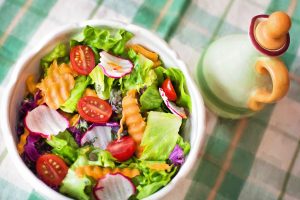“Discovery” Diets, or How to Go About Cutting Out All the Stuff That’s Pissing Off Your Body
I recently found myself in yet another full-on elimination diet, a hard-core one this time. I had questions about my food choices, and I needed some good answers.
For all of us, cutting out foods that we usually eat is hard. It’s annoying. It’s a big time investment. And it means change, sometimes unwanted, sometimes short-term, sometimes longer.
Despite these negatives, an elimination diet can be a gift. It can mean feeling MUCH better fairly quickly, which can be a welcome thing! Because, let’s face it, elimination diets are the best way to figure out if a food is not working well for you.

It’s not easy to ease into elimination diets, so I’ve put together my tips and tricks to help make the process a little easier for you!
- Know why you’re doing this in the first place. What are you hoping to learn?
- Have a tracker in place to determine if you’re actually getting symptom relief from removing and then ultimately reintroducing specific foods. I give my clients a spreadsheet that has columns to track foods introduced, and then physical and emotional/mental symptoms.
- Plan ahead. A massive diet change that you decide to start tomorrow is bound to fail. More on this below.
- Know how long you will do this for and record it in your calendar. Will you need to restart completely if you accidentally have a restricted food, or can you just keep going? Can you start reintroducing foods sooner if you start getting the desired results quickly?
- Look online for lists of hidden ingredient namesfor the foods that you are avoiding. Compare this to items in your pantry as well as your medications. For instance:
- Gluten: https://www.celiac.com/articles.html/forbidden-gluten-food-list-unsafe-ingredients-r182/
- Corn: https://www.glutenfreesociety.org/hidden-corn-based-ingredients/
- Dairy: https://www.kidswithfoodallergies.org/media/1631/milk-allergy-avoidance-list-hidden-names.pdf
- Soy: https://www.kidswithfoodallergies.org/media/Soy-Allergy-Avoidance-List-Hidden-Names.pdf
- Medications: http://glutenfreedrugs.com/newlist.htm

Planning ahead
Set a date in the near future when you will start your diet. Be realistic about when that will be after considering the following:
- Who does the cooking in your house? Will you only be responsible for your meals, or others’ meals? Can others in the house do the diet with you, or can you modify the meals enough so that it’s easy to pull out for yourself what you’re avoiding? Can you find recipes ahead of time that meet your needs?
- Who does the shopping for your house? What types of typical foods will need to be replaced with others? Do you know what you will replace things with, and where you will find these items? Do they need to be ordered online or can they be purchased at the local grocery store?
- Make a shopping list!
- If you decide to eat out, do you know what questions to ask at the restaurant to make sure you are able to be accommodated with your needs? Do you need to print out a list of the “ok” foods to bring to the restaurant?
- Do you need to take any special supplements while doing your discovery diet? Do you know where to purchase them from? How long will they take to arrive? Make a chart of when they need to be taken so you have it ready to go.
- Have ready-to-go snacks that fit into your diet for ease. Look online for recipes if needed.
- Get your family and friends on board as needed to support you! At least so they try to remember not to offer you things you’re avoiding.

Withdrawal Symptoms??
Some foods can be notoriously hard to remove from the diet because they create withdrawal symptoms like aches, pains, headaches, and obsessions and cravings for those foods. These are short-lived symptoms, and should last no more than about a week! My clients that experience this withdrawal report it’s often limited to a few days at most. Commonly suspect foods include gluten, dairy, and sugar, however, any food to which you are reacting can cause this type of reaction.
With a bit of pre-planning, you can make your discovery diet a little easier to kick off! Here’s to hoping that you find the answers you were looking for from it!
References
Rockwell, S. J. (2012). Rotation diet: A diagnostic and therapeutic tool. In J. E. Pizzorno & M. T. Murray (Eds.), Textbook of natural medicine (4th ed., pp. 395–398). Churchill Livingstone.
